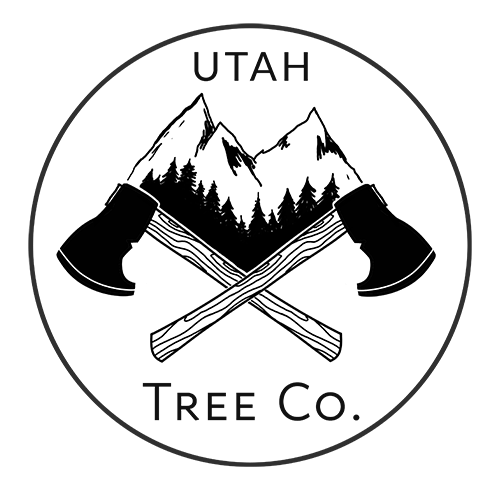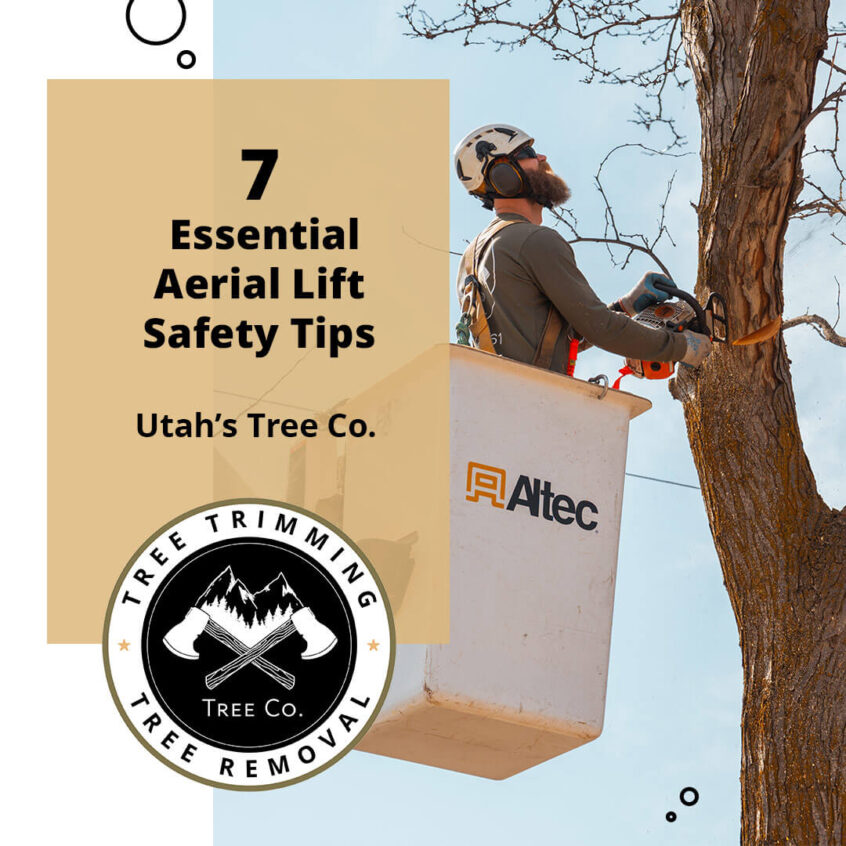Owning a home in Utah brings with it several responsibilities. Maintaining your landscape through proper tree care, trimming, and tree removal is among the chief ones to ensure the health, safety, and beauty of your property.
While some homeowners handle landscape maintenance themselves, it’s important to realize that tree trimming can be hazardous and exhausting. It’s always a good idea to entrust this job to a proven tree services company.
The truth is, maintaining and improving your landscape can necessitate aerial lifts, especially when it comes to tree trimming and tree removal. However, performing aerial lifts safely can be tricky for the untrained and contribute to injuries and fatalities.
Dangers Associated with Aerial Lifts
Aerial lifts can be risky and lead to injuries, damages, and even death if operators don’t know how to use them safely. Knowing about the dangers of careless aerial lifting can be effective in preventing accidents.
Our tree services team knows for a fact that falls, electrocution, and tip-overs are some of the most common mishaps involving aerial lifts. Needless to say, untrained operators are ill-equipped to prevent these types of accidents. Further, if the lift isn’t positioned properly or gets hit by a vehicle, crane, or another large object, it can lead to fatal falls.
Some other hazards include:
- Ejection from the lift
- Structural failures
- Falling objects (tools, landscaping material, and so on)
- Entanglement hazards
- Collision with overhead structures
- Collision with other objects
Seven Tips for Aerial Lifting Safety
If you still plan to perform aerial lifts yourself, you should know how to prevent these kinds of mishaps. Here are a few important aerial lift safety tips from our tree services specialists.
1. Learn to Use the Lift
Our first and foremost aerial lift safety tip is, knowing how to operate the lift before using it. More often than not, improper use of aerial lifts or operator error leads to major mishaps.
However, this also means that adequate training can prevent these accidents. Ensure you learn how to stabilize and position the aerial lifts. Educate yourself about the measures you can take to minimize the risk of a fall.
2. Inspect the Lift before Each Use
Our tree care experts also recommend that lift operators perform a thorough inspection of the device before operating it. This can help identify any potential hazards or defects that can compromise safety. The inspection should be done not only for the vehicle components but also for the lift components.
3. Read the Manufacturer’s Instruction Manual
The instruction manual that comes with every lift consists of advice specific to the make and model of that particular device. This can help prevent accidents as they mention the height and weight capacities and restrictions that need to be strictly adhered to if mishaps are to be averted.
4. Maintain Safe Distance from Power Lines
When you’re working on tall trees, you’re bound to come across power lines that may or may not be live. You should, therefore, maintain a distance of at least 10 feet between your lift and the lines at all times.
Additionally, always assume that the power lines are energized, even if they’re insulated or inactive. You don’t need a tree services expert to tell you that it’s better to be safe than sorry!
5. Wear Protective Gear
Workers should wear protective equipment like hard hats, rubber gloves, and rubber-soled shoes when performing tree trimming or tree removal. If you’re working at elevated heights, you should wear full-body harnesses that are properly secured.
Never sit, stand or climb on the guardrails or use them for stability. Instead, use fall protection equipment that’s designed to keep tree service providers safe and secure. Read up about OSHA’s PPE (personal protective equipment) requirements before operating aerial lifts.
6. Place the Lift on Even Ground
Ignore this aerial lift safety tip at your own peril. Aerial lifts can become unstable and tip over if placed on uneven or unstable surfaces. Hence, always place them on a leveled ground. If you’re positioning a lift on an incline, set the brakes and use the wheel chocks to keep them lift from rolling off.
7. Be Mindful of the Lift’s Loading Capacity
While aerial lifts can handle heavy loads, they do have limitations, which are clearly mentioned in the manufacturer’s instruction manual. Bear in mind that the weight limitations of an aerial lift include the tools and the attachments in the bucket. Calculating the overall weight may take time, but it can prevent the bucket from breaking and the lift from tipping over, keeping tree workers safe.
Aerial Lifts or Tree Climbing Spurs? What to Use and When
Aerial lifts are great for your yard’s maintenance, especially where routine tree trimming and pruning is concerned. It’s best to avoid tree climbing spurs (also known as tree climbing spikes and gaffs) for these tasks.
Climbing spurs consist of sharp spikes made of steel. These are attached to the tree worker’s legs when they want to climb up and down a tree for maintenance. They may look harmless and seem like a simple way to climb trees, but they’re really harmful to tree health and lifespan.
Your trees can suffer immense damage when tree climbing spikes are used. The spurs create puncture wounds in the tree trunk, which can worsen over time and cause parts of the tree to die. Even healthy and mature trees can get injured as the climbing spurs pierce the tree cambium (the living tissues under the protective bark). Sap can start oozing out from the tree, jeopardizing tree health and growth.
The holes caused in the tree’s bark make them more vulnerable to diseases and insect infestations. A simple tree trimming job can turn into a nightmare if your tree becomes sick and requires expensive treatments or dies or necessitates complete tree removal.
As an experienced tree removal company in Utah, we recommend using a tree climbing kit with spurs only when a tree has died and needs to be removed. In fact, it may be ideal when climbing ropes, harnesses, and aerial lifts cannot be used or when there’s no other way to avoid overhead power lines.
Tree climbing spikes are inherently dangerous for trees as well as tree workers and homeowners as the chances of the spurs becoming unstable are high. This can lead to falls.
No professional tree services company will ever recommend using tree climbing spikes for regular maintenance, but many inexperienced tree workers use climbing spurs to due to their limited knowledge. Also, they might not be trained in using safety equipment or could be trying to cut corners and save time.
To put it simply, aerial lifts are most suitable for tree trimming and regular upkeep, while tree climbing spikes may be used when tree removal is involved.
Contact Us for Safe Tree Trimming and Removal Services
If you’re a property owner, you probably understand the importance of landscape maintenance. However, compromising your and your family’s safety in this matter is just not done. Only a professional tree services company should be entrusted with the job of landscape maintenance and tree removal.
The tree care experts at Utah Tree Co. will handle all your tree trimming and tree removal needs with state-of-the-art equipment and through proper safety procedures. Your precious trees will be in the hands of specialists who will promote and protect your yard’s natural beauty.
Call our tree removal company in Utah at (801) 386-2405 or use this online form to request a consultation.

